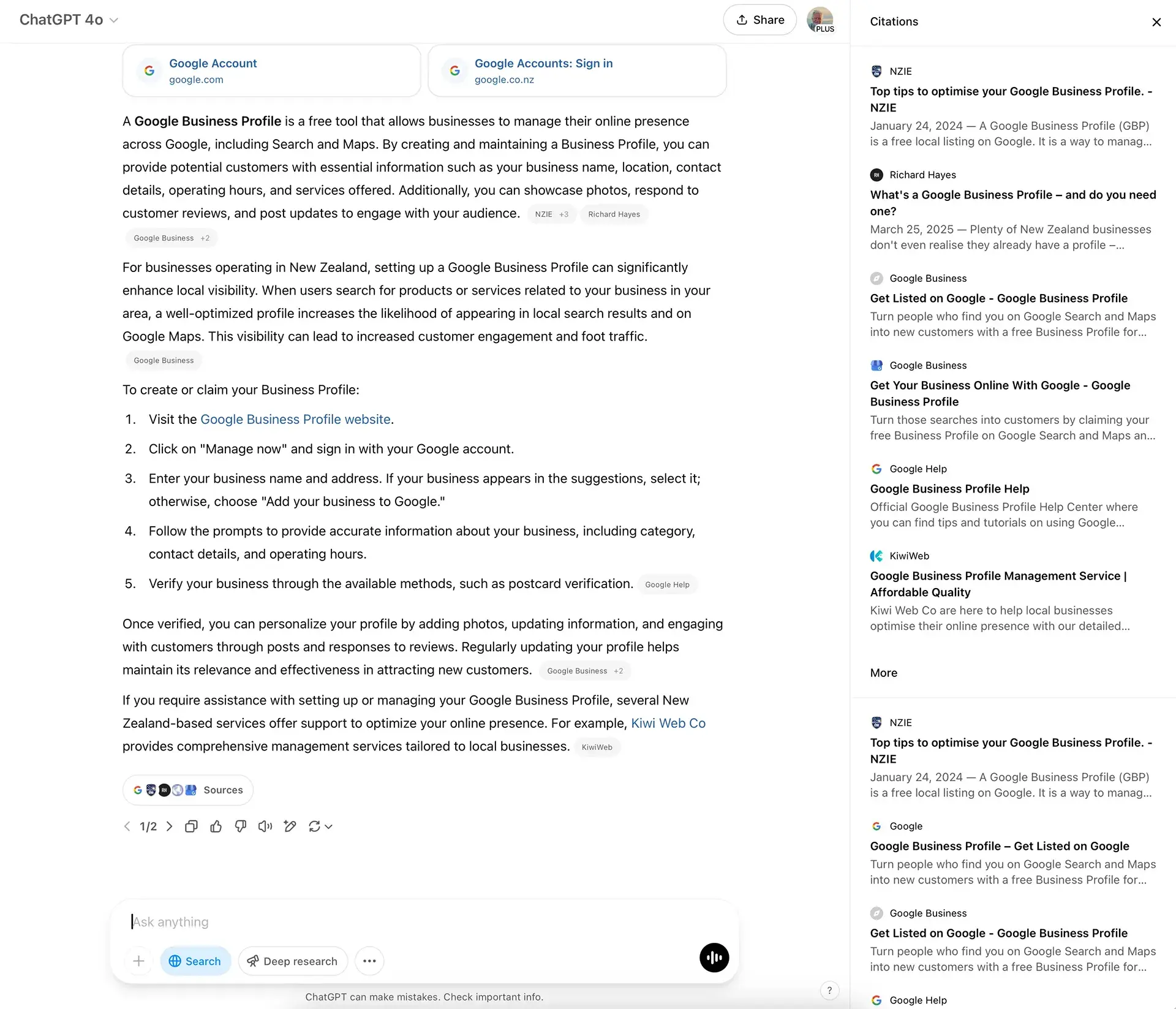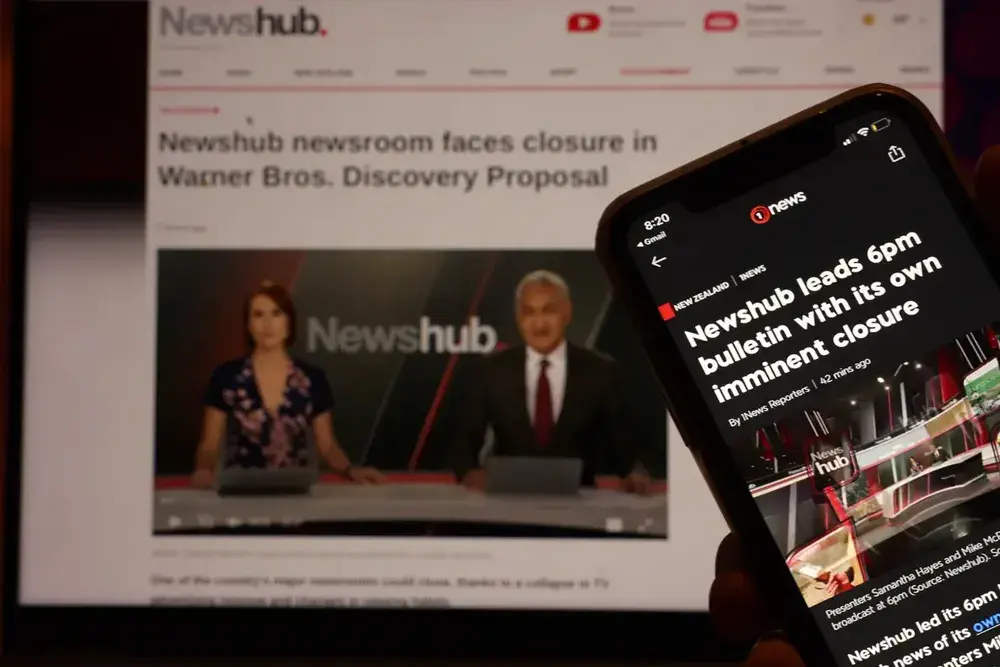A real example that shows how GEO works
This is a working generative engine optimisation example. I created an article focused on Google Business Profile in New Zealand. It wasn’t long. It wasn’t complex. But it worked.
The goal? To show how one clear, helpful page can rank in Google and get picked up by AI tools like ChatGPT. I used basic SEO, local relevance, and natural language — the same way a person would explain something over coffee. AI responded by using the page as a trusted source.
Why I created this Generative Engine Optimisation example
Most New Zealand businesses don’t realise how powerful their Google Business Profile can be – or how simple it is to set up properly. I noticed a gap. People were searching, but the content they found wasn’t local or useful. That’s when I decided to write something better.
I wanted to see what would happen if I followed Generative Engine Optimisation principles from the start. Keep it local, keep it clear, and keep it focused. That’s what this is – a real, live GEO example.
How I built the article
I used ChatGPT to help shape the page. It gave me a solid structure and helped refine the flow. I still wrote the content in my own voice.
I used natural headings and clear explanations. No fluff. No jargon. Just answers to real questions. I included local examples and used everyday language – the kind that makes sense to both humans and machines.
On the technical side, I gave it a short, descriptive URL /google-business-profile, added a clear page title, and made sure the page was fast and mobile-friendly. That’s enough to keep both Google and generative AI happy.
The Result: Search + AI visibility
The page now ranks in Google for searches like “Google Business Profile New Zealand”. That alone was a win – it proved the content was clear, relevant, and trusted (Screenshots below). To be honest this was a complete surprise.
But then it went a step further. It appeared in ChatGPT’s AI-generated answers, meaning the content wasn’t just findable, it was used. That’s what GEO is really about: writing content that works for both people and generative engines.


Why this example matters
It didn’t bring leads – not yet. But it achieved something more valuable: It showed up. It got picked up. It became part of the answer. This content now works in the background. It helps with visibility. It builds trust. It acts as proof – for me, and for anyone wanting to understand how Generative Engine Optimisation works.
What you can learn from this GEO example
This wasn’t luck. It was, well mostly strategy – just not the complicated kind. I picked a narrow topic (the SEO term for this is “low hanging fruit”, don’t chase the highly used keywords pick smaller achievable ones). I answered a real question. I used clear structure. And I let AI help without letting it take over.
Here’s the takeaway:
You don’t need a team or a huge strategy. You need one useful page, written with clarity and intent. That’s enough to make a difference.
FAQs: Generative Engine Optimisation example
What is Generative Engine Optimisation?
Is GEO replacing SEO?
What is the difference between SEO and AEO?
- SEO is about ranking in search.
- AEO (Answer Engine Optimisation) is about showing up directly in answer boxes or AI tools.
- GEO brings them together. It covers both search and AI – and this case study is a real-world generative engine optimisation example.
How do I write for generative AI?
Start with clear structure. Use headings. Keep paragraphs short. Answer the question first. Use plain language. Avoid filler and jargon. The clearer your writing, the easier it is for AI to understand, use, and share.
Why should I use GEO?
People are using AI tools like ChatGPT to search. If your content is structured well and written clearly, AI tools might reference it. That builds trust, increases reach, and gives your content a longer life. GEO makes your content future-ready.
The method works
This is just one generative engine optimisation example, but the method works. AI helped write it. AI later cited it. And the human touch kept it grounded and useful. That’s the sweet spot.
If you want to try this for your own business, or need help finding your version of “low-hanging fruit,” I’m here. Let’s build something that gets found – by people and by AI.








